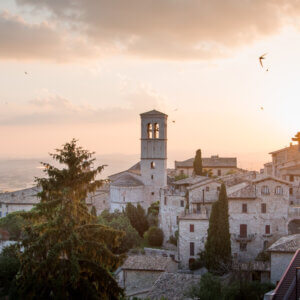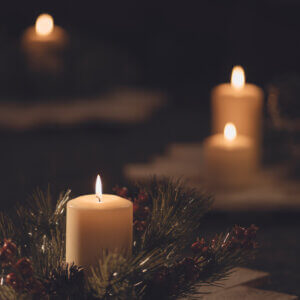A “table” in honor of St. Joseph—whose Solemnity we celebrate today—is a delightful tradition that comes to us from Sicily. And guess what: you can re-create it in your own home!
According to legend, a terrible drought struck Sicily in medieval times. The people begged St. Joseph to intercede for them and, sure enough, rain fell and saved the people from starvation.
In thanksgiving, the people created a great table filled with delicious foods and treats and shared their abundance with the poor.
The tradition took off, and every year Sicilians—and eventually other regions and countries—would celebrate this feast day with a “St. Joseph’s Table” to be shared with friends, family, and, in a particular way, the less fortunate. Traditionally, food was specially set aside for giving to the poor. No one is turned away from the Table!
You can find this tradition today at many parishes right here in the United States.
Here’s how the traditional Table usually looks. Different places have their own regional specialities and you can add your own as well!
The table gives the impression of a little makeshift shrine or altar, with three tiers representing the Holy Trinity and steps leading to Heaven. A statue of St. Joseph stands on the topmost tier. Lilies and other flowers as well as candles and a basket of prayer intentions are often included.
Surrounding St. Joseph is a smorgasbord of beautiful foods, which are symbolic as well as delicious. Some of the most common ones include:
- Sardines and other fish. No meat is included, to commemorate the time of Lent.
- Sesame bread, which is formed into shapes such as St. Joseph’s staff, a sheaf of wheat, the Cross, and the Crown of Thorns.
- Bean dishes, especially lentils and fava beans (the hardy bean that is said to have sustained the Sicilians during the famine).
- Bread crumbs are used in the cooking of the foods, to represent the sawdust of St. Joseph’s workshop.
- Lots of sweets. A traditional Italian one is St. Joseph’s Sfinge, a puff pastry filled with ricotta and topped with a cherry.
- Citrus fruits and wine.
Many places begin the celebration with the “tupa-tupa” or “knock-knock.” Children dressed as the Holy Family move from one building or door to another, knocking and asking for shelter. They are refused until they get to the building containing the St. Joseph’s Table. They are then invited in with joy and served first as the guests of honor.
You can read more about St. Joseph’s Table and other Lenten and Easter traditions in Celebrating a Holy Catholic Easter. Brought to us by Fr. William Saunders, author of the bestselling Celebrating a Merry Catholic Christmas, this book is a fascinating guide to the Church’s beautiful liturgies, devotions, and traditions of Lent, Holy Week, and Easter. Available today at The Catholic Company!
















